Essential first aid tips everyone should know
Find out how to treat cuts, blisters, bruises and other minor injuries.
Updated on October 30, 2024
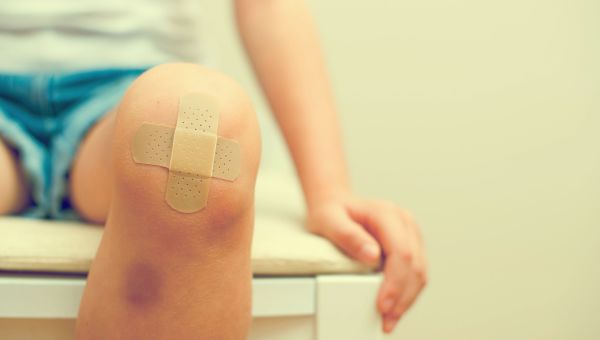
Many of us have experienced a minor injury, like a scraped knee, a blister from breaking in a new pair of shoes, or a splinter from a wooden park bench. But you don’t have to suffer through the pain—and, in fact, you shouldn’t leave these minor maladies unattended.
Jared White, MD, an emergency medicine specialist in North Kansas City, Missouri, shares the safest and speediest treatment options for eight common injuries, and signs you should have them checked out by a healthcare provider (HCP).
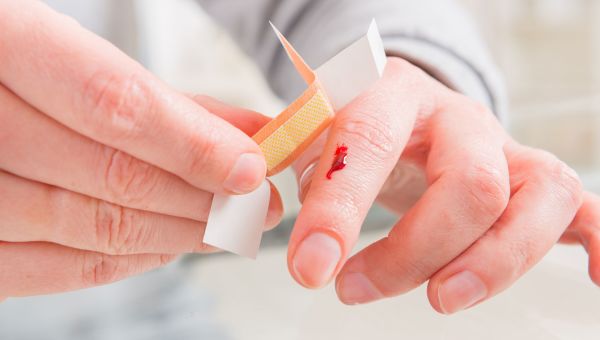
Cuts
If you get queasy at the sight of blood, something as innocent as a minor cut could send you into panic mode. Fear not: “If it's a minor or small cut, it’s usually appropriate to take care of it at home,” says Dr. White.
How to treat: Wash your hands before attending to any injury. Next, wash the area with soap and warm water. Minor lacerations typically stop bleeding on their own, but stubborn cuts may require a bit of pressure. Pressing a clean cloth over the cut should do the trick. Apply an antibiotic cream to keep the area moist and help stave off infection. Then, cover with a bandage. Change it each day, or if it gets dirty or wet, like in the shower.
When to seek help: See an HCP right away if you have a cut that bleeds for longer than 10 or 15 minutes despite applying pressure. Also see an HCP immediately if it has jagged edges, or exposes muscle, fat, tendon, or bone. Your injury may require stitches. Discoloration, warmth, swelling, and drainage can signal infection, which also requires medical attention.

Sprains and Strains
Muscle strains and sprains cause swelling, bruising, and pain, and can happen almost anywhere in the body. Back strains are common, while sprains occur most often in the knee and ankle. A sprain is the result of a tear in the ligament, the bands that hold the bones in your joints together. When you overexert a muscle, it can tear. This is known as a muscle strain. Both strains and sprains are often the result of stretched muscles and ligaments that cause microscopic rips, rather than large tears.
How to treat: “For sprains and strains, an easy thing to remember is to R.I.C.E.,” says White. “R.I.C.E. stands for rest, ice, compression, and elevation.”
Overworking the injured joint or muscle can delay healing, so rest is the first step to a speedy recovery. Ice helps reduce pain and swelling and should be applied several times throughout the day for the first 48 hours, beginning immediately after the injury. Apply the ice pack to the affected area for 15 to 20 minutes at a time. Compression helps quell swelling and limits bruising. A medical bandage or compression sleeve can work well for this step. Lastly, elevation can help decrease swelling, so keep the injured area raised above the heart when possible.
When to seek help: It can be tough to tell the difference between a minor strain or sprain and something as serious as a broken bone. If the injury renders you unable to move the affected area or you’re unable to bear weight on it, seek medical attention.

Bumps and Bruises
Unfortunately, there’s no quick fix for the tender, purple marks that appear on your skin after you do something like bump your leg on the corner of a coffee table. “Other than avoiding further trauma to the area, you just have to give the bruise time to heal itself,” says White.
How to treat: Ice and over-the-counter pain medication can help dull the discomfort caused by a small bleed just below the skin’s surface. Slightly more severe bleeding beneath the skin is known as a hematoma.
Hematomas can occur anywhere in the body and typically cause swelling and pain. Superficial hematomas, those that occur in the skin or soft tissue, can be treated with the R.I.C.E. method for the first 48 hours. According to White, heat can be applied after the first two days to soothe pain.
When to seek help: Not all hematomas can be treated at home. Hematomas in the skull, brain, nose, ear, or muscle tissue should be cared for by an HCP. Hematomas that cause significant pain, are on the head or over a joint, or even in the nailbed, may need to be monitored (and potentially treated) by an HCP.
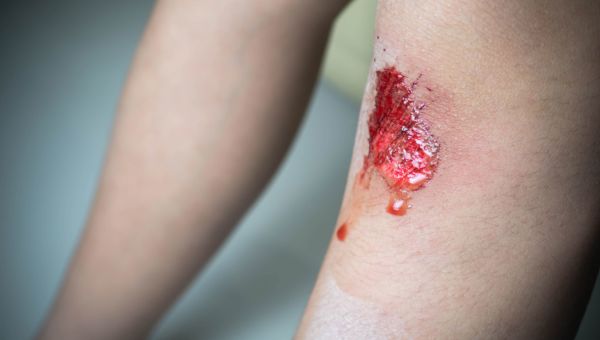
Scrapes
Like minor cuts, scrapes can usually be treated at home. A scrape is an area of skin that has been rubbed off, typically the result of a fall or contact with a rough object. Abrasions can be painful and even bleed but are not likely to pose much danger to your health.
How to treat: Before touching the injury, be sure to thoroughly wash your hands. Introducing dirt and germs into an open wound could be a recipe for infection.
These types of injuries tend to be dirty, so give the wound a thorough wash with soap and warm water. If the open area is bleeding, apply pressure with a clean cloth. It can take up to 15 minutes for bleeding to stop, especially with larger scrapes. Apply an antibiotic ointment and cover the area with a bandage.
When to seek help: Signs of infection, like warmth, pus, or red streaks near the affected area require medical attention. If the scrape is large, or if there is dirt and debris deep inside the wound that you can’t get out, check in with an HCP.
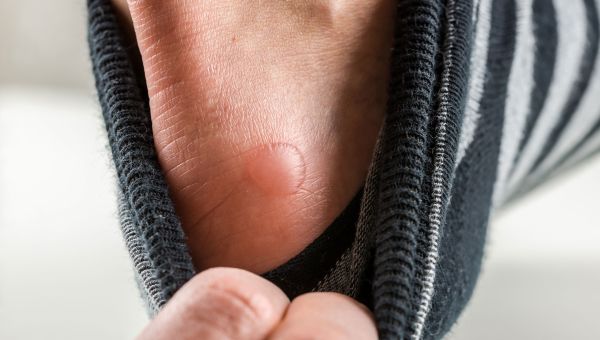
Blisters
You’re likely familiar with the fluid-filled bumps known as blisters, which form as a result of heat and friction—repeated rubbing against one area of the skin. Blisters (unrelated to medical issues, such as poison ivy or skin infections) are common, often appearing on the hands and feet. While blisters pose no serious health risk, they should be treated with care. The layer of skin that covers the blister acts as a protective barrier and helps prevent infection.
Blisters can be protected with a loose-fitting bandage or padded with over-the-counter products known as blister guards or cushions.
How to treat: Blisters typically remedy themselves. And as tempting as it may be, you shouldn’t act on an impulse to pop a blister. However, if the blister is very large or painful, interfering with daily activities like walking, it may need to be drained. There’s a specific procedure for doing this to help reduce risk of infection.
With clean hands and a sharp needle sterilized with rubbing alcohol, poke several small holes along the edge of the blister and allow the pocket to drain. Apply an antibiotic ointment and cover with a bandage. Keep the area medicated and covered to help prevent infection.
When to seek help: Infection may still occur. If you notice swelling, redness, warmth, or pus, take a trip to an HCP.
Prevent blisters by wearing shoes that fit properly, investing in moisture-wicking socks, and wearing gloves when handling tools and sports equipment.

Burns
There are degrees of burns, some of which require immediate medical attention. Here’s how to tell the difference.
Superficial burns (also known as first-degree burns) affect the top layers of skin. They can be painful, but most times are not serious. If you experience discoloration and swelling after brushing against a hot pan or spending too much time in the sun, you probably have a superficial burn. “If there's no blistering, you're probably safe to take care of it at home,” says White.
How to treat: Tend to superficial burns by rinsing with lukewarm water (not ice cold, as that can cause further tissue damage), a cool compress, and ointment, like petroleum jelly or moisturizer. Until the burn is healed, keep the area clean with soap and water and protect it with a gauze pad.
When to seek help: Some burns are far more serious. Superficial partial-thickness and deep partial-thickness burns (also known as second-degree burns) reach deeper parts of the skin and cause painful blisters, redness, and swelling. If these burns are larger than 3 inches in diameter or cover the feet, hands, face, or a major joint, go to the emergency room for treatment.
Full-thickness burns (also known as third-degree burns) are the most serious, as they reach the deepest layers of skin and often result in nerve damage. Full-thickness burns can cause black or white charred skin, swelling, and a leathery appearance. Any burns larger than 3 inches that produce blisters or show signs of infection—like increased pain, swelling, or oozing—need immediate medical attention. If you suspect a full-thickness burn, head to the emergency room.
In addition, “any burn that's on the hands, feet, face, or genitalia, regardless of degree, needs to be evaluated by a doctor,” says White.
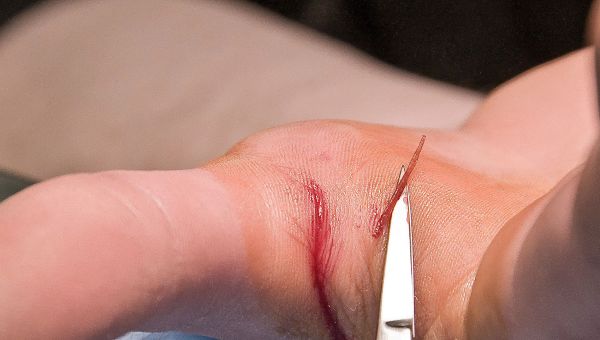
Splinters
It’s a real wonder that a tiny sliver of wood can cause such excruciating pain, but anyone who has experienced a splinter knows it to be true. In a rush to remove the object, it can be easy to forget about safety and the risk of infection.
How to treat: Before removing the splinter, wash your hands and the affected area with soap and warm water. Using tweezers or a needle sterilized with rubbing alcohol, extract the splinter from the skin. Once it’s removed, clean the skin and apply petroleum jelly or other ointment to keep the skin moist. Cover with a bandage. To prevent infection, keep the area covered until it heals completely.
When to seek help: “Splinters can be a little tricky, because you really need to have the entire splinter removed,” White says. If it’s too deep or large and you can’t get it out, see an HCP or make a trip to an urgent care center. Redness or other discoloration, swelling, warmth, and drainage are all signs of a possible infection that need to be seen by an HCP.
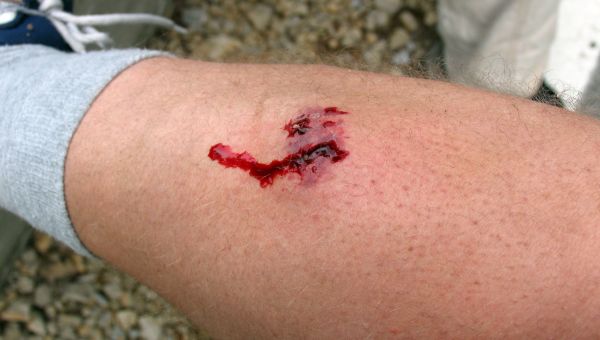
Animal and Human Bites
Bites from cats, dogs, and even humans happen. If the bite doesn’t break the skin, you likely have nothing to worry about. However, any bite that breaks the skin needs to be treated by an HCP.
How to treat: If the bite results in bloodshed, wash the area with soap and water. Then apply direct pressure using a clean, dry cloth to stop or help control the bleeding.
When to seek help: Immediately see an HCP. “Wounds resulting from bites are more prone to infection because of the bacteria present in the mouths of animals and humans,” says White.
An HCP will thoroughly clean and irrigate the wound, give you antibiotics, and administer a tetanus shot if yours isn’t up to date. The following information can also help an HCP in treating you:
- Cats: A cat’s fangs can puncture holes in the skin, leaving bacteria deep inside the wound. Animals like cats and dogs can carry rabies. If possible, find out from the pet’s owner if its rabies vaccination is up to date. Let an HCP know if you were bitten by a wild animal.
- Dogs: See an HCP within eight hours of the bite. Waiting much longer can increase your risk of infection. Try to find out if the dog’s rabies vaccination is current and give your HCP the details of the animal that bit you.
- People: Because of the bacteria present in a person’s mouth, human bites can be dangerous and hard to treat. Human bites can spread certain diseases, like HIV/AIDS and hepatitis B and C. Seek medical attention within 24 hours of the bite.

Mayo Clinic. Cuts and scrapes: First aid. May 1, 2024.
UVA Health. Laceration Repair. Accessed October 29, 2024.
MedlinePlus. Muscle strain treatment. Reviewed April 27, 2023.
Mayo Clinic. Sprain: First aid. April 23, 2024.
UPMC. How to Use the RICE Method for Treating Injuries. April 10, 2023.
MedlinePlus. Strains. April 27, 2023.
Mayo Clinic. Bruise: First aid. April 17, 2024.
MyAlbertaHealth (Canada). Hematoma: Care Instructions. July 10, 2023.
MedlinePlus. Scrape. Reviewed April 27, 2023.
Nemours Teen Health. Cuts, Scratches, and Scrapes. Reviewed September 2020.
MedlinePlus. Blisters. Updated November 15, 2016.
American Academy of Dermatology Association. How to prevent and treat blisters. Accessed October 29, 2024.
Mayo Clinic. Blisters: First aid. May 1, 2024.
Mayo Clinic. Burns: First aid. August 1, 2024.
MedlinePlus. Minor burns – aftercare. August 15, 2022.
University of Rochester Medical Center. Third-Degree Burn in Children. Accessed October 29, 2024.
American Academy of Dermatology Association. How to remove a splinter. Accessed October 29, 2024.
MedlinePlus. Human bites – self-care. April 3, 2024.
Cleveland Clinic. If a Dog Bites You, Do These 7 Things Now. February 7, 2020.
Mayo Clinic. Animal bites: First aid. May 10, 2024.
More On


video

article

slideshow


video


video
